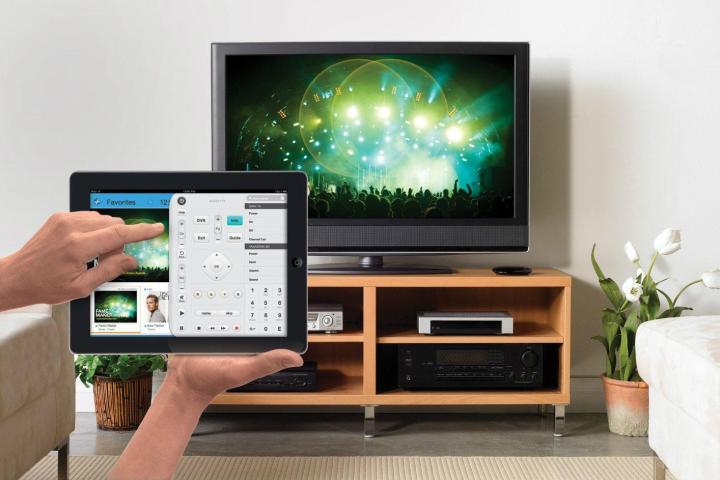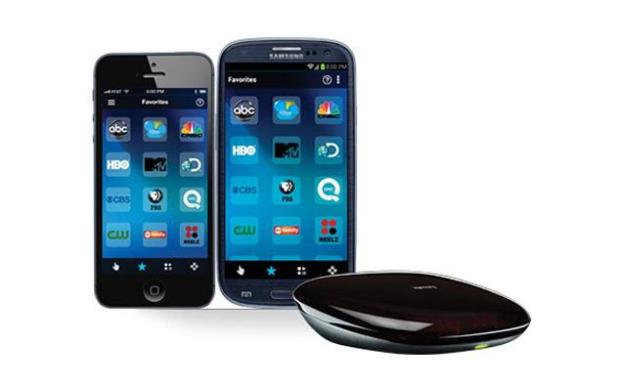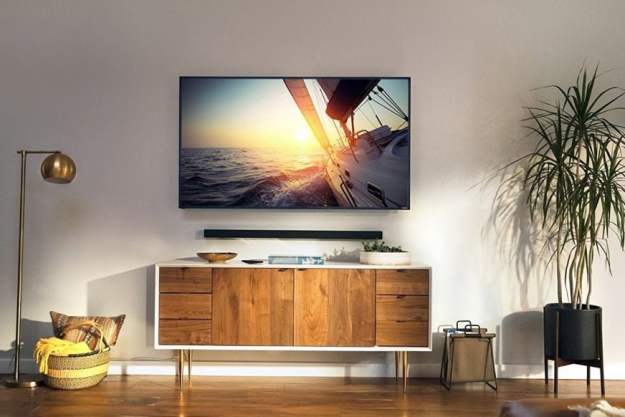
You may not have known this, but Logitech almost sold off its Harmony remote line earlier this year as part of a plan to retool and refocus the company’s assets. In the end, it spared the popular universal remote from an acquisition (or the guillotine) and is now committed to making it better. Where it once had no serious competitors, the game has changed with smartphone and tablet manufacturers thinking they’ve got the goods to take them out. Logitech doesn’t think so.
Harmony remotes don’t have a long history, but you could argue they do have something of a storied one. The first Harmony remote was developed in Canada in 2001 and Logitech scooped it up for a cool $29 million. It’s been the standard universal remote ever since, so its uncertain future months ago led to speculation that the company saw the writing on the wall and preferred to focus on mobile devices instead – especially if they were to cannibalize the Harmony business anyway.
So now that Logitech’s all in, how does it think it can make Harmony that much better? We looked to find out.
For starters, Logitech wouldn’t reveal why it opted not to sell Harmony off, but the folks we spoke to did provide some insight into what the future holds for the line to keep it going for the long-term.
The smartphone has a place in terms of control from almost anywhere…but people have a love affair with buttons that runs pretty deep
“Consumer expectations are now higher, so it doesn’t just start and stop with your home entertainment system. We have to figure out how mobile devices and end points like lighting fit in,” says Chad Thompson, director of marketing at Logitech’s Digital Home Group. “Compatibility was always the focus in the beginning, as in, ‘would it work with devices at home?’ We’ve addressed that with our database, so it should now be about broadening the scope and enriching the experience.”
It’s no secret that there’s been some experimentation in various circles in that area. Microsoft believes it has a winning combination with its Kinect sensor that lets you use voice recognition and hand gestures to navigate menus and access content on the Xbox 360 and upcoming Xbox One. Samsung and other TV manufacturers have played around with some motion-sensored and voice concepts, but still haven’t fully integrated them. And who knows when, or if, Siri will eventually make its way to the Apple TV box or the rumored flat-panel TV Cupertino is supposedly working on.
Harmony remotes don’t do voices or gestures. They’re a mix of old school buttons and snazzy touchscreens that present some of their best features. Thompson was on a panel at this year’s CES in January that discussed what he calls “ingredient technologies”, like voice, gestures, swiping, tapping and other potential inputs.
“Not one of those is the perfect option because they have to complement and supplement each other, so we’re absolutely looking at when voice makes the most sense,” he says. “What kind of experience would you have with the TV on and a certain amount of noise coming out of it, while you’re trying to change the channel or volume. What does that experience look like? The level of accuracy is something we’re aware of and concerned about, since those ingredient technologies can become gimmicky really quickly.”

And yet, some of those “ingredients” are already standard features on smartphones. Samsung, HTC and Sony have all pushed the idea of including IR blasters on their flagship phones to highlight the fact that it’s another neat thing your phone can do. After all, if it’s sitting there next to you, why not put it to work showing a visual guide and flipping channels?
When Logitech was looking to sell off the Harmony business, it was thought that a big reason why was because smartphones and apps would eventually just kill it anyway. Thompson wouldn’t substantiate that view, but did say that smartphones do have their place in the bigger picture.
The company first experimented with the idea of a smartphone and tablet remote with the Harmony Link, a Wi-Fi-connected module with a built-in IR blaster that beamed commands taken from a mobile app. The value add seemed to make sense. Pay $100, and your iPhone, iPad or iPod Touch could effectively do almost everything a top-notch Harmony remote can. But that wasn’t entirely the case, and Logitech has since released the Harmony Smart Control Hub for the same purpose. The Harmony Ultimate combines Logitech’s best remote and includes the Smart Control Hub in one bundle.
“The smartphone has a place in terms of control from almost anywhere, like if you’re in the kitchen with your phone in your pocket and you want to change channels without having to go to the remote to do it,” he says. “But people have a love affair with buttons that runs pretty deep, so our dedicated remotes will always resonate.”
Except that traditional TV viewing also means different boxes are being hooked up to a home theater setup. Harmony plays nice with all Blu-ray players and classic set top boxes, and also supports streaming boxes like the Apple TV and Roku. Those can equally be controlled via apps for iOS and Android in lieu of their respective remotes, much like Netflix on a PlayStation 3 can be controlled on iOS as well. And Harmony remotes don’t have headphone jacks, like the Roku 3 does, which allows two viewers to watch the same show or movie at different volume levels.
Though discontinued, the Boxee Box remote had a QWERTY keyboard on the back. With search becoming more prevalent in navigating content, using arrow buttons to do the job is what Thompson admittedly calls a “lean-forward experience”, rather than the relaxing lean-back experience using a remote should offer. Smartphones have an inherent advantage here because of their keyboards. But another advantage is that they can do updates automatically.
“We’re very much focused on the idea of Wi-Fi connectivity and over-the-air software updates in the background, so that the remote is always updated and ready, negating the need to plug into a computer,” he says. “Our Hub-enabled products speak a number of languages, Wi-Fi, RF, IR, IP, and what that enables us to do is push those at a time of day where we hope to impact very few users.”
“What Harmony did in the beginning was bring in a level of compatibility and simplification that just didn’t exist before.
“Where we see a big challenge today – and we talk to a lot of manufacturers out there about all these various home controls – is that there are no open standards,” he says. “We see that as a real opportunity, and we would love to get to a place where we have app developers working to deliver an experience that is more inclusive in terms of end points whether it’s in the living room or beyond.”
This is already possible with Philips’ Hue lighting system, but home automation and appliances come to mind. The Nest Thermostat or Belkin WeMo products are also possibilities, since they already work with smartphone apps. Changing the lighting and temperature, while also starting a movie with one touch is part of the vision.
“Harmony’s value and focus has really been on optimizing one-touch, but beyond lighting, what else is there? If someone is sitting down on the couch, what are things that really distract or force them to get up to make the experience more powerful?” he says. “With our compatibility and all the metadata associated with those codes, that’s extremely valuable as far as the experience it can deliver, and we want to optimize that. It’s one thing if the lights dim when the movie starts, but what if the lights lit up when pausing?”
The broader strategy around Harmony seems to tie into Logitech’s move to focus on mobile accessories, digital home and music products to go along with its traditional computer and gaming peripheral business. Now that Harmony will live on, its future looks like it will tie into more than just mobile devices, with the connected home being the long-term vision.
“What Harmony did in the beginning was bring in a level of compatibility and simplification that just didn’t exist before. Where that complexity was confined to at that time was the home entertainment system, and moving forward, the challenge is exactly the same,” he says. “Maybe it’s not going to be just one-touch in the future, but one command like, ‘Harmony, good morning,’ to get up and running.”



